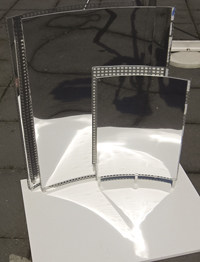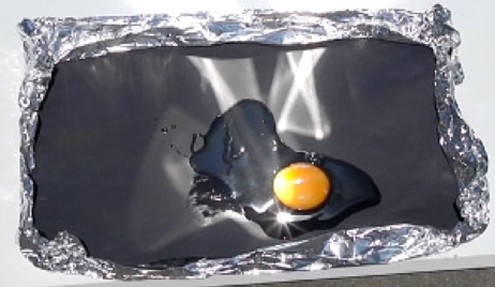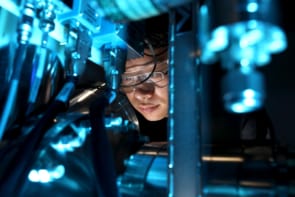by Michael Bishop, who is the IOP’s press officer

The designer of London’s Walkie Talkie skyscraper has come under scrutiny this week as reports of flaming bicycle seats and melting cars have resulted in a temporary scaffold being erected at street level to block the intense reflection of the Sun’s rays as they beat off the curved building.
One thing you can’t say is that nobody saw this coming.
In a study published last summer in the European Journal of Physics (EJP), two researchers from Germany performed a number of experiments that gave an in-depth explanation of why some skyscrapers have these undesired effects.
In addition to a number of computer simulations that investigated the reflecting effects of a building’s height, width and curvature, as well as the angle and position of the Sun, the researchers also performed experiments on a scale model (right) of the Vdara hotel in Las Vegas.
The Vdara hotel – which was designed by the same architect as the Walkie Talkie – attracted similar criticism when it opened in 2009 after guests complained that the pool deck was hot enough to singe hair and melt plastic. The hotel was briefly known as the “death ray hotel”.
As Chris Shepherd from the Institute of Physics (which publishes physicsworld.com), explained to the BBC, “Fundamentally, it’s reflection. If a building creates enough of a curve with a series of flat windows, which act like mirrors, the reflections all converge at one point, focusing and concentrating the light.”
To demonstrate this, Michael Vollmer and Klaus-Peter Möllman, the authors of the EJP paper, used three curved mirrors to create a model of the Vdara hotel at a scale of 1:200. They used an infrared camera to measure the temperatures on the floor as the Sun’s rays were reflected.
After a few minutes they observed that the 1.5 cm-thick wooden plate that the model was placed on reached temperatures of up to 110 °C. When a thin black sheet of paper was placed on the wood – which absorbs sunlight much more readily – it reached a temperature of 250 °C within seconds.
If that wasn’t enough, the researchers proceeded to fry an egg on an aluminium sheet in the focal area of the reflection; it took just a couple of minutes to cook.

After quantifying these effects, the researchers predicted that more instances like the Vdara would occur in the future.
“Concerning realistic buildings, we expect the occurrence of this optical phenomenon to increase. This is not only due to the desire of appealing appearance but also to the increasing importance of energy efficiency of buildings,” they wrote.
With the building on 20 Fenchurch Street scheduled for completion in 2014, maybe it’s not too late for the designer to check out some more of the physics in the EJP paper.
• This article was originally published on the IOP blog.



